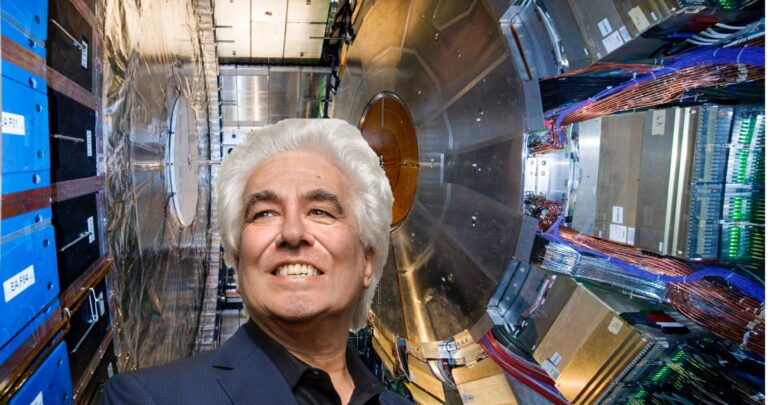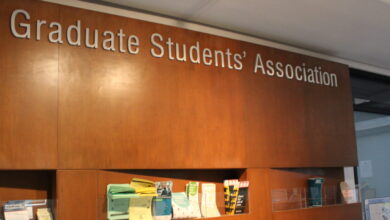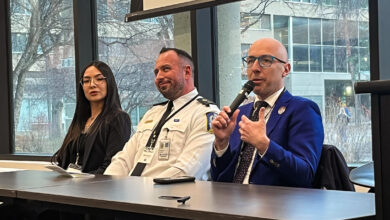 Supplied
SuppliedUniversity of Alberta physicists Doug Gingrich and James Pinfold are among the recipients of the 2025 Breakthrough Prize in Fundamental Physics. The prize recognizes those who have made significant contributions to discoveries in physics.
For over three decades, Gingrich and Pinfold were part of the team at the European Organization for Nuclear Research (CERN) in Switzerland that developed the ATLAS detector — the largest-volume particle detector ever built. Located 100 meters underground, the eight-story, 7,000-ton structure explores particle physics from black holes to dark matter.
A standout experience for Gingrich was bringing electronics to test at the accelerator.
“Things are never what you expect, and usually we pulled it off and got some data at the last minute or the last day, that was always a victory,” Gingrich said. “Typically, you didn’t sleep much during these one-week trips, so that was very rewarding to get that success.”
According to Gingrich, a key challenge of the project was the high cost of building microelectronics, which meant no effort was spared on each attempt.
“The probability of it working was around 20 per cent when people were getting started, and so I feared that 20 per cent number. By the time the technology got going and I was involved, it was much higher than 20 per cent — by a long shot,” Gingrich said.
Particles with very small charges are difficult to detect. To address this, Pinfold and Gingrich, on behalf of the U of A, are leading the Monopole and Exotics Detector at the LHC (MoEDAL-MAPP) experiment on the Large Hadron Collider (LHC) ring, constructing an additional detector to explore the frontiers of physics.
From high school physics to black holes
In high school, Gingrich became fascinated by the challenges of physics.
“In my final year of high school in Ontario, we were allowed to just take three math [classes] and three science [classes], and I was in paradise.”
His interest in particle physics grew as he read numerous articles in Scientific American during his undergraduate studies. The defining moment came when he got a summer co-op job outside of Chicago through the University of Toronto.
“I knew that was it for me, I was going to do that, and I never looked back.”
Beyond electronics, Gingrich’s contributions to ATLAS expanded into producing black holes, also called the search for quantum gravity.
“There was some interest in discovering or producing black holes in the LHC accelerator, and I took that up as my science topic,” Gingrich said. “I remember being on the edge of it. When we got the data, I felt at that time I was one of the only people in the world, or maybe two or three people, who could actually tell you, hey, there’s no black holes there yet.”
Pinfold joined the U of A in 1992 to start the particle physics program. As a requirement of his position, he joined two major experiments at CERN: the Omni-Purpose Apparatus at LEP (OPAL) and Experiment for Accurate Gamma, Lepton, and Energy measurements (EAGLE).
Initially, two separate proposals, EAGLE and Apparatus with Super Conducting Toroids (ASCOT), competed to become the primary experiment. Eventually, two groups incorporated into one team, now known as ATLAS. A subsequent aftermath involved handling readjustment challenges such as the cancellation of the supercollider and physicists shuffling into new teams.
During the ATLAS project, Pinford’s most memorable experiences included building a 400-ton liquid argon calorimeter at the U of A, and collaborating with University of Bologna and other groups on the construction and installation of the LUCID luminosity detector.
“Although it is very small, it is extremely important because it measures the actual number of interactions per second that we’re getting, and that’s very important for determining things like cross sections,” Pinfold said.
Pinfold and Gingrich offer advice for aspiring physicists
When asked for advice to support physicists and engineers who dream of working on global-scale projects like CERN, Pinfold emphasized the importance of being a team player, to join projects, and contribute as much as possible. He suggests seeking out individual interests through small experiments in important but overlooked areas.
“Use your imagination to find something that you can work on within the vast context of the experiment, but not forgetting you have to contribute to the experiment,” Pinfold said.
Gingrich also suggests that students surround themselves with peer groups that inspire self-improvement.
“You have to recalibrate yourself because you could have been the best in your small physics department and you’re thrown into this international environment where everybody is supposed to be good,” Gingrich said. “That can be taken as a challenge … and I hope that’s what students will do.”




